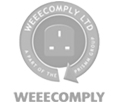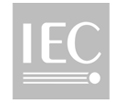Comparing Stepper Motor and Servo Motor Microscope Stage
Posted in Microscope automation May 12th 2021
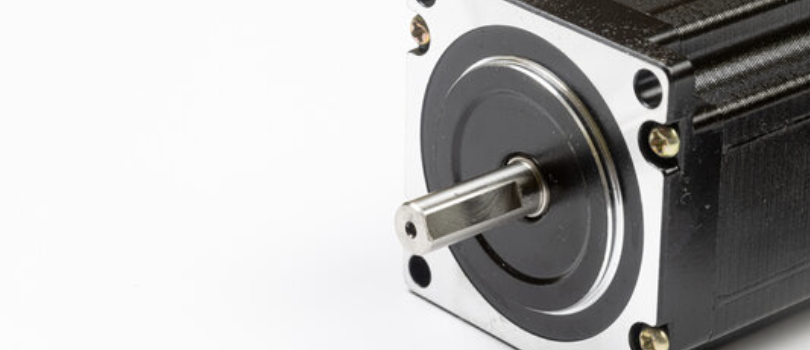
Stepper motor and Servo motor stages account for the majority of microscope stages sold worldwide for photonics applications. The deciding factor when choosing between a stepper or servo motor stage in most applications isn’t that one type will work and the other won’t, but rather it is about determining which type gives you the most benefits for your application, whether that advantage is in speed, accuracy, integration effort, or cost.
Stepper motor stages:
Stepper motor stages use DC step motors that move in precise steps via a series of electrical pulses to the motors which create rotational motion. Unlike servo motors, stepper motors will not move continuously by applying a known voltage but must be continuously “pulsed” in order to create constant motion. Most stepper motors fall into three categories; hybrid, permanent magnet and variable reluctance, with hybrid stepper motor stages accounting for the majority of stages found in industrial applications.
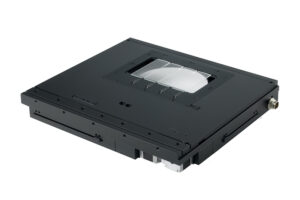
Prior Scientific’s model H101F stepper motor stage
Evaluation Criteria
- Cost –
- Stepper motors are less expensive than similar servo motors.
- Basic stepper stages do not require positional feedback, keeping the stepper controls cost low.
- Board level stepper drivers are available at an affordable cost.
- Torque –
- Stepper stages have high torque at low RPM.
- Torque drops exponentially as speed increases.
- Stepper motors have resistance to motion while idle (holding torque) which is helpful in several applications such as time lapse imaging.
- Performance and limitations –
- Stepper stages have micron and, in some cases, sub-micron level repeatability.
- Stage precision can be improved by encoding each axis.
- Average stepper motor stage precision can range from 50 nanometers to tens of microns.
- Point to point moves under 1mm in less than 100 milliseconds are possible.
- Maximum speeds are typically limited to around 100 mm/sec.
- Stepper stages exhibit poor velocity ripple (smoothness of motion) at low speeds.
- Controls –
- Stepper controls are well understood with plenty of commercially available options.
- Stepper stages have no tuning issues but can have minor resonance at lower speeds.
- Open loop operation simplifies use and minimizes long term maintenance.
Applications that require micron to sub-micron level repeatability moving point to point, at an economical price are good candidates for a stepper motor stage. Prior Scientific’s OptiScan series stepper motor stages are ideal for the economically conscious user with an assortment of micron level precision stages for routine scanning and imaging applications. For applications that require higher precision and higher speeds, Prior offers the ProScan series stepper motor stages. Prior ProScan stages have sub-micron repeatability (as low as 200 nanometers) and optional linear optical encoders should closed loop control be required. With travel ranges that exceed 300 mm ProScan stages are compatible with samples that range from glass slides to large semiconductor wafers.
Common applications for stepper stages include:
- Whole slide imaging where Prior Scientific’s ProScan and OptiScan stages provide high speed open loop start/stop scanning at speeds from 25 to 100 mm/sec.
- Multi position time lapse imaging where Prior ProScan H117 and H101 stages average 200 nanometer repeatability when paired with optional linear scales.
- Thin film metrology and semiconductor wafer inspection.
Servo motor stages:
The primary components of DC servo motor stages are rotary or linear DC motors, control electronics and positional feedback encoders to monitor the motor position. Rotary servo motor stages are quite similar in design to their stepper motor cousins. A traditional ballscrew type servo motor stage couples a rotary servo motor to a ballscrew providing motion for each axis. Each axis will have rotary or linear encoders, with linear encoders directly measuring stage axis travel and therefore providing the best accuracy. Linear servo motor stages on the other hand utilize a linear magnet track with a forcer (coil) to move along the magnet track providing smooth, high force translation eliminating the need for mechanical transmissions such as ballscrews, rack and pinion or belt drives. The ability to draw more current as needed provides high acceleration rates and allows servo motor stages to maintain rated torque from 0 to 100% speed. DC Servo motor stages are constantly monitoring encoder output so that motor position can be adjusted to either maintain position, move to a new position or travel at a known velocity. Servo motor stages score higher in several but not all evaluation criteria.
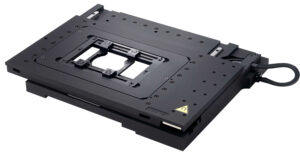
Prior Scientific’s model HLD117 linear servo motor stage.
Evaluation Criteria
- Cost –
- Higher motor cost on average than stepper motor stages.
- Closed loop control is the only option which requires additional encoder cost.
- Defining servo loop controls creates additional development costs.
- Torque –
- Excellent from low to high RPM.
- Lower holding torque/force than stepper stages.
- Performance –
- Excellent velocity ripple with linear DC Servo stages performing best.
- Velocity variations at speeds below 100 microns per second of less than one percent are common.
- Point to point accuracy and resolution primarily limited by encoder resolution.
- Speed – excellent on longer moves, but shorter moves comparable to stepper stages.
- Maximum speed exceeding 1 meter/second is common.
- Controls –
- Closed loop control required using encoders.
- Load variations can affect servo gains causing potential tuning issues for multi-use systems.
- Excellent velocity ripple with linear DC Servo stages performing best.
Applications where the benefits of superior speed, acceleration and velocity control outweigh the added costs may want to consider choosing DC servo motor stages. Linear DC servo motor stages are especially well suited for applications requiring smooth steady velocity control as the stage plate bearings provide the only source of friction in the system. The ProScan Linear Servo motor HLD117 stages from Prior Scientific with TTL I/O triggering functions, provide constant speed movement with very low velocity ripple for picture perfect synchronization with imaging software.
Common applications for servo motor stages include:
- Constant velocity imaging, (linear DC servo best in this application) where Prior Scientific’s HLD117 stages provide smooth scanning at speeds as low as 1 micron per second.
- High content well plate screening for drug discovery where scanning an entire well plate in less than 15 seconds can be achieved.
- High speed semiconductor positioning stages for manufacturing and inspection.
- High precision laser etching or laser tissue removal applications which require smooth motion to prevent unintentional burned areas or incomplete cutting.
When it comes to cost and simplicity, stepper motor stages have clear advantages over servo motor stages. When low velocity ripple is the key performance specification for your application, a DC Linear Servo stage performs the best. When the choice is not clear, both technologies are can perform at high levels, but the user will need to assess the sometimes subtle differences between stepper and servo stages such as holding torque, closed loop options for stepper stages, and the ability to handle widely varying samples in order to make a choice in favor of one technology over the other.










